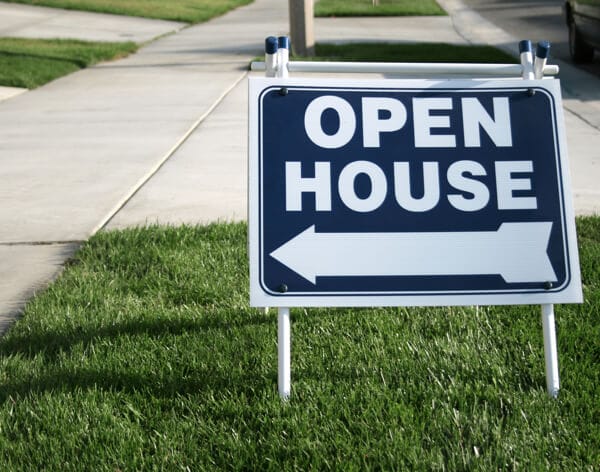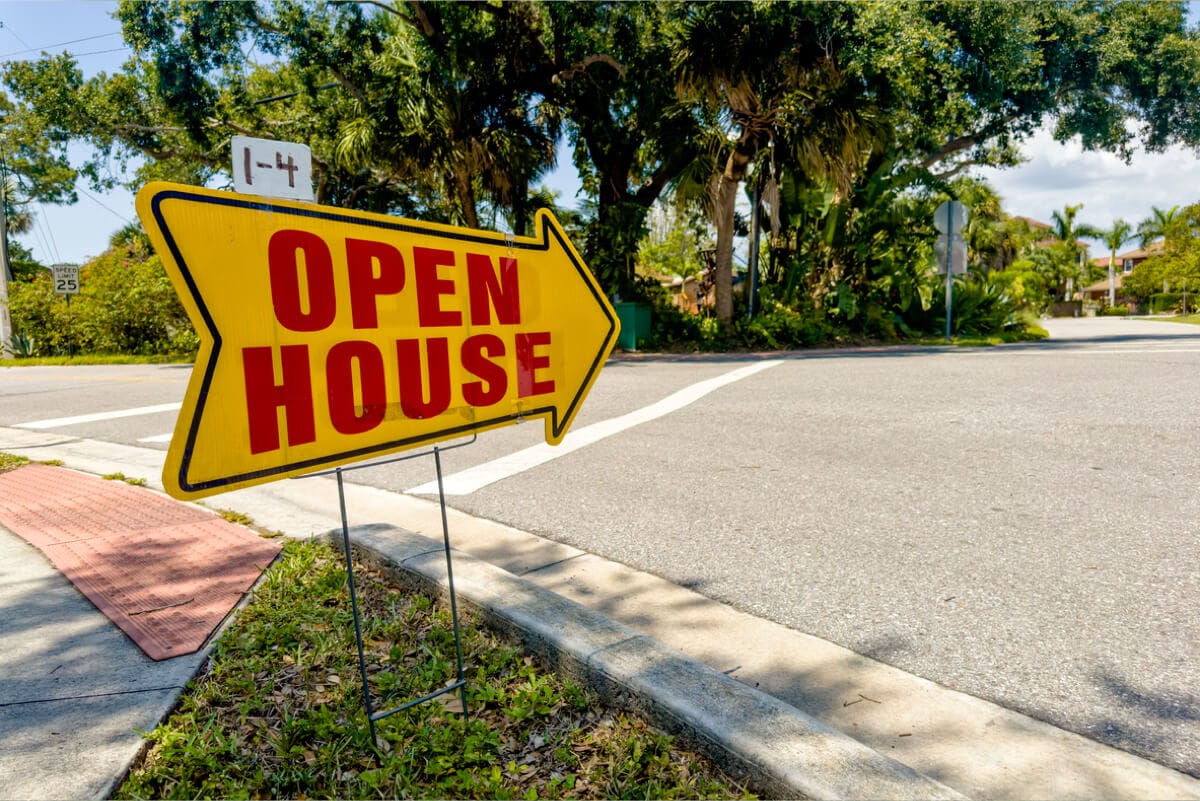Where to Put Open House Signs: A Guide to Proper Open House Sign Placement

Getting eyes on your open house starts long before the first guest walks through the door. It starts at the curb, or more precisely, at the intersections, corners, and sidewalks that lead people there. Open house sign placement demands more than visibility; it takes intention, awareness, and a little strategic thinking.
Whether you've hosted dozens of open houses or you're gearing up for your first, knowing where to put open house signs can mean the difference between a quiet afternoon and a steady stream of interested buyers. This guide lays out where to plant your signs, how to think like a directional strategist, and what to watch for along the way.
Why Open House Sign Placement Matters
Open houses live or die by foot traffic. While photo listings and MLS buzz play their part, street-level signs often close the gap between digital interest and actual visits. Smart open house sign placement should be an integral part of your marketing strategy.
Think of open house signs as directional invitations. Every one you stake should answer a question: "Where's the house, and how do I get there?" That answer needs to be clear, eye-catching, and impossible to miss. A well-placed sign at the right corner can snag the attention of a casual driver, a neighbor with a friend in the market, or someone who skipped the online search entirely.
Done right, your signs create a natural trail. They build anticipation, set expectations, and guide potential buyers all the way to the front door, no GPS confusion, no last-minute U-turns.

Ready to Stock Up on Open House Sign Panels?
High-visibility signs only work if they're built to be seen. Oakley Signs offers durable, attention-grabbing open house signs designed specifically for REALTORS who don't leave turnout to chance. From bold fonts to directional arrows, every detail helps you point buyers exactly where they need to go. Our sign panels are weather-ready, professionally branded, and built to stand out, on the street and in your marketing toolkit.
Whether you're guiding traffic from a busy intersection or marking a quiet cul-de-sac, quality signage makes the difference. With plenty of styles, materials, and customization options, you'll find what fits your brand and your budget. Skip the flimsy stuff. Choose sign panels that look sharp, hold up, and help you show like a pro.
Shop NowHow Many Open House Signs Do I Need?
There's no universal number, but there is a smart way to decide. The goal isn't to flood the streets; it's to create a clean, connected path that brings buyers straight to the door. So, how many open house signs do you need? Let's break it down.
Start with the Basics: One Sign Per Turn
Map the most logical driving route to the home from nearby main roads. You'll want a sign at every key turn and intersection. For most neighborhoods, that means at least three to five signs, more in areas with winding streets or limited visibility.
Factor in Obstacles
If construction, parked cars, or landscaping could block a sign, add backups. Visibility is non-negotiable. It's better to double up than to leave someone guessing.
Don't Forget Internal Placement
Once buyers are in the neighborhood, they still need reassurance they're on the right track. A few well-placed directional signs inside the community help keep the route intuitive, especially in larger developments or gated areas.
Quality Over Quantity
Ten signs won't help if they're all crammed onto one busy corner. Be strategic. Well-positioned signs with clear messaging outperform scattershot setups every time.

Vehicle Signs
Make every trip count with vehicle signs that turn your car into a mobile marketing tool. Oakley Signs offers magnetic options that keep your branding front and center wherever you go. Designed for Realtors who value visibility, these signs are easy to apply, remove, and reuse without damaging your vehicle's finish. Whether parked curbside at an open house or cruising through town, they help reinforce your presence in the market. It's smart, simple exposure that keeps your name moving.
Benefits include:
- Durable materials built for repeated use and road-tested weather resistance
- Clean, professional designs that maintain a polished brand appearance
- No-residue removal for effortless on-the-go marketing
Where to Place Open House Signs for Maximum Visibility
Strategic placement is a tactical decision that makes or breaks turnout. The right locations give your signs staying power, helping drivers connect the dots without second-guessing the route. Knowing where to place open house signs starts with thinking like your audience: Where are they coming from, and what will they see?
Here are the top spots that consistently deliver:
- High-Traffic Intersections: Start with the busiest entry points near your listing. These are the spots where your signs have the best chance of catching attention from passing cars.
- Neighborhood Entrances: Add a sign just past the turn-in to the subdivision or complex. This confirms that visitors made the right turn and keeps them moving forward without hesitation.
- Mid-Route Markers: For winding roads or layouts with multiple turns, use signs to guide the way. These check-in points eliminate confusion and keep visitors on track.
- Key Crossroads or Decision Points: If your listing is tucked deep inside a development or behind multiple roundabouts, give drivers reminders at every fork. The fewer decisions they have to make, the better.
- Right in Front of the Property: This one’s obvious but still essential. Your final sign should clearly mark the destination, and it should look as sharp and professional as the home you’re showing.
Using this mix of sign placements increases visibility and builds trust. People follow confident signage. If it feels like they’re being guided by someone who knows the area, they’re more likely to follow through to the front door.

How to Position Open House Signs Effectively
It's not just where you place your signs; it's how you position them. A well-chosen location loses its impact if the sign gets ignored, knocked over, or buried in someone's overgrown yard. To make your open house signs work harder, dial in the details.
Prioritize Visibility
Place each sign so it's visible to drivers approaching from both directions. That usually means a slight angle, not straight on, not completely sideways. About 45 degrees to the curb tends to hit the sweet spot.
Secure Against the Elements
Wind, rain, and even lawn sprinklers can mess with your setup. Use sign panels with solid stakes or frames designed to stay upright in all conditions.Oakley Signs offers plenty of weather-ready real estate panels that hold their own when the breeze picks up.
Keep It Eye-Level
Too low and your sign disappears behind hedges. Too high and it looks like a billboard. Aim for about 24 to 36 inches off the ground, right in a driver's line of sight, without obstructing sidewalks or sightlines.
Direction Matters
Use clear arrows, and make sure they point exactly where you want people to go. A poorly positioned arrow can turn one missed turn into a lost opportunity.
Thinking strategically about how to position open house signs effectively can mean more foot traffic through the door and fewer confused texts asking for directions.
Can Real Estate Agents Put Signs Anywhere? Understanding Local Rules
Here's the short answer: no. And ignoring that can cost you. While it might be tempting to plant your open house signs anywhere there's foot traffic, local governments and HOAs usually have something to say about that.
Municipal Laws
City ordinances often limit where temporary signage can go, especially on medians, utility poles, or public rights-of-way. Even if a spot seems ideal, it may fall into a restricted zone. Always check with the local municipality before setting out your signs.
HOA Rules
Homeowners associations add another layer. Some ban directional signage altogether. Others only allow it during certain hours or on specific days. If your listing falls inside an HOA-managed neighborhood, call ahead or review the community guidelines.
Private Property Concerns
And then there's private property. If you're placing open house signs on corner lots or near a business, you'll need permission. A polite ask goes a long way, especially if the spot has high visibility.
So, while the question "Can real estate agents put signs anywhere?" gets asked a lot, the real skill lies in knowing where you're allowed to place them and planning your route accordingly.
Tips for Timing and Removal
You've mapped out your route, secured the right spots, and positioned your open house signs like a pro; now the clock's ticking. Timing matters, and so does cleanup.
Set Up Early, But Not Too Early
The sweet spot for setup is typically two to three hours before your open house begins. That gives your signs time to do their job, catching the eye of early weekend traffic, without risking removal by city crews or HOA patrols. If your showing's on a Sunday, it's best to avoid placing signs the night before unless you've confirmed there are no overnight restrictions.
Take Them Down Promptly
Leaving signs up after the event wraps sends the wrong message. It looks careless and can create trouble with local ordinances or neighborhood groups. Plan to retrieve your signs within an hour or two of closing. Better yet, assign someone to help collect them as you wrap up the showing.
A polished setup paired with a timely takedown shows that you're organized, respectful of the neighborhood, and fully in control of the details.
Get Sign Panels That Look Sharp and Last
Don’t let worn-out signage undermine a professional showing. Oakley Signs delivers high-quality real estate sign panels that stand out, hold up, and keep your brand looking polished from the first turn to the front door. Order today and get the tools that help serious Realtors make serious impressions.
Shop NowFrequently Asked Questions About Open House Signs
According to the National Association of Realtors, 51% of buyers find their home using the internet. But signs still play a vital role in real estate marketing, and Oakley Signs is here with answers to your questions about open house signs. Here are some common things people want to know.
Can open house signs be left out overnight or over the weekend?
That depends entirely on local ordinances and HOA rules. Some areas allow temporary signs overnight or for weekend-long events, while others strictly prohibit them outside of specific time windows. To avoid fines or frustrated neighbors, always check with the municipality or neighborhood association where the property is located and, when in doubt, take them down at the end of the day.
What should be included on an open house sign to ensure it is effective?
Keep it clear and focused. At a minimum, include the words "Open House," your directional arrow, and the date and time of the event. Branding (like your brokerage logo), your name, and a contact number can also help, but don't overload it. Visibility and legibility come first; if someone can't read it from a moving car, it's not doing its job.
How do weather conditions affect the placement and type of open house signs used?
Weather can wreck a weak setup. Windy days call for signs with secure stakes, while rain demands waterproof materials and bold, smudge-free print. If you're in a region with unpredictable conditions, invest in durable open house signs designed to stay upright and readable no matter what the forecast throws your way.




